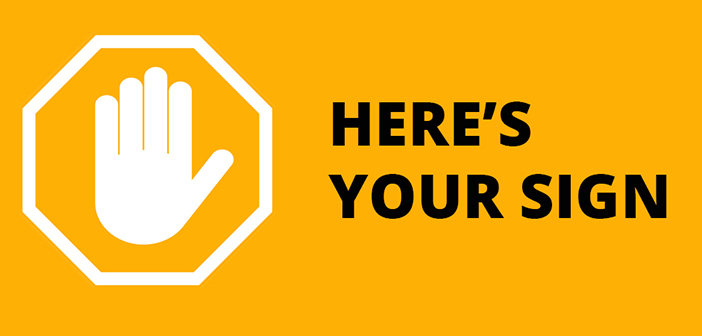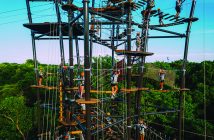All organizations in the aerial adventure industry have a duty and responsibility to educate, inform and warn participants about many aspects of their operation(s). Failure to educate, inform and warn has been a very hot topic in some large and high profile adventure sport cases, especially in the ski industry. In the end, many operators have been found negligent due to the fact that they failed to accomplish the objectives of educating, informing and warning their participants.
One of the most effective ways to communicate these messages is through appropriate signage located on and around the premises, and along course routes. All of the signs need to be easily readable and in conspicuous locations that every single participant can see.
In this article, we are going to talk about five categories of signs that you should be considering for your operation. The categories of signage that we will be focusing on are: Assumption of Risk, Operational, Premises, Rules of Participation, and Educational.
Assumption of Risks
In our operations, risk is inherent. One would assume that each participant would recognize this. What’s the old saying about people who “assume?” There should be signs at the check-in counter and on the course about the risks that a participant is assuming by participating in the activity. You may even want to place a sign that says guests are voluntarily assuming all inherent risks associated with the activity by purchasing a ticket. Signage should never replace the waiver document, it’s just another risk management tool you should have in your toolbox.

An operational sign with safety information courtesy of CLIMB Works Keana Farms in Hawaii
Operational Signs
This type of sign is typically located on the course or tour. The primary purpose or intent of these signs is to remind the participants of items they may have heard in ground school, or read in safety protocols, that need to be reinforced time and time again. Ask yourself the question, “What procedures or information needs to be repeated to our participants to ensure a positive experience, and more importantly, their safety?”
Common items to consider include:
- Proper braking techniques (do not “grab” the line when hand braking!).
- List the different “hand signals” that guides will be giving and what they mean.
- Proper body positions when riding the zip line.
- How to properly operate the belay system.
- Reminders that their safety and wellbeing depends on listening and obeying all rules and procedures.
Premises Signs

A “Stop” sign on a gate at CLIMB Works Keana Farms
The primary purposes of premises signs are to warn the participants and any potential trespassers. The positioning of these signs tends to be at the access points of the course.
Common language to consider for these signs includes:
- “No Trespassing: Trespassing can cause injury or death.”
- “Stop. Do not proceed unless attached to course.”
- “Stop. Do not proceed without a guide accompanying you.”
Please note that premises signs should not be the only way of preventing access. Each access point should have a physical barrier to deter any unwanted visitors or unauthorized users.
Rules of Participation
There are many things to consider when crafting “rules of participation” signs. Keep in mind that the main question here is: “Who can or cannot participate in this activity?” The primary purpose and intent of this type of sign is to educate and inform the participant of restrictions specific to who can participate in the activity, and who cannot.
Common items to consider for these signs include:
- Manufacturer guidelines (weight, height and age limitation)
- Medical limitations (however, you should NEVER be deciding if a participant can participate or not, this is the job of a physician)
- Alcohol and drugs are prohibited
Educational Signs

An educational sign at CLIMB Works Keana Falls about the legend of King Kamehameha
This is just a little tip to help enhance the customer experience. People love to learn new things, especially about the natural and environmental characteristics of your tour’s location. Post signs with unique historical facts about your area, and highlight interesting nature facts throughout the tour. These signs are great cues for your guides to share fun facts with guests during a tour, and add an educational component to a physical activity, enhancing the overall experience.
We often think of signs as a basis for legal defense. While signs can be used to help your cause in a legal matter, it’s important for us all to think about signs from a fresh perspective. We all should be utilizing signs to educate, inform, and warn participants so that our organizations can operate as safely as possible. When we collectively focus our efforts on incident prevention, rather than post incident defense, then the entire industry’s future will be that much more successful.
Cameron Annas, CIC, CRM, CWCA is an Adventure Sport Risk Consultant and Vice President of Business Development at Granite Insurance. If you have any questions about proper signage or your own risk management and insurance program, please contact Cameron at [email protected] or 828-212-4552.






